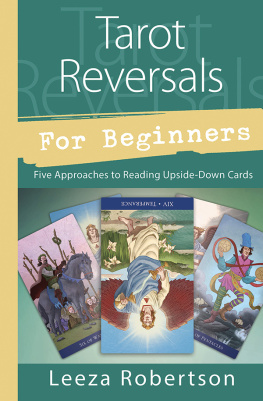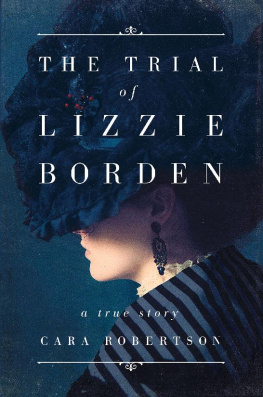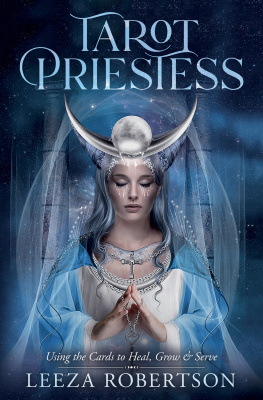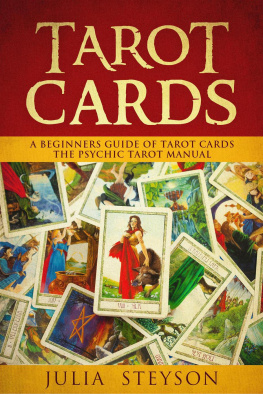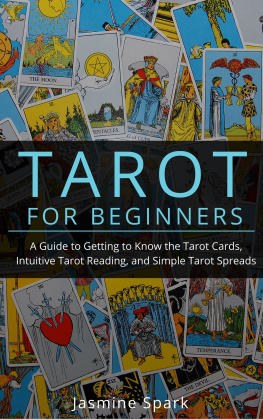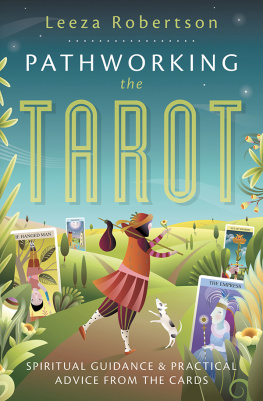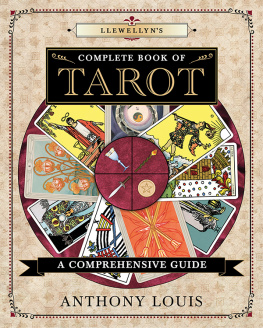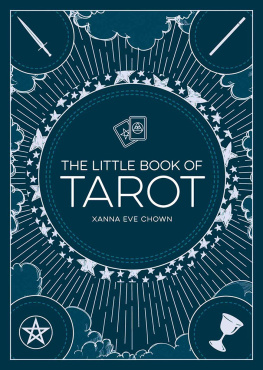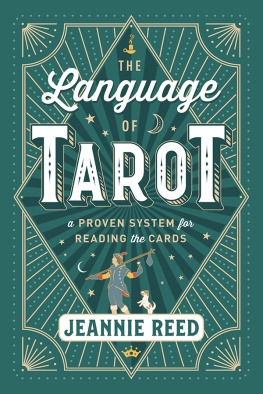Leeza Robertson spends more time with tarot cards than she does with real people. You will find her hidden away in nice warm cozy corners with piles of decks and books around her. She spends her days dreaming up new decks and exploring ways to introduce more people to the world of tarot. When she doesnt have her nose inside a book or her fingers dancing across a deck of cards, she is hiking, traveling, and finding new books to stick her nose into. Connect with Leeza on Twitter: @Leeza_Robertson.

Llewellyn Publications
Woodbury, Minnesota
Copyright Information
Tarot Reversals for Beginners: Five Approaches to Reading Upside-Down Cards 2018 by Leeza Robertson.
All rights reserved. No part of this book may be used or reproduced in any matter whatsoever, including Internet usage, without written permission from Llewellyn Publications, except in the form of brief quotations embodied in critical articles and reviews.
As the purchaser of this e-book, you are granted the non-exclusive, non-transferable right to access and read the text of this e-book on screen. The text may not be otherwise reproduced, transmitted, downloaded, or recorded on any other storage device in any form or by any means.
Any unauthorized usage of the text without express written permission of the publisher is a violation of the authors copyright and is illegal and punishable by law.
First e-book edition 2018
E-book ISBN: 9780738757384
Cover art: Llewellyns Classic Tarot by Barbara Moore and Eugene Smith 2014, Llewellyn Publications
Cover design: Shira Atakpu
Interior card art: Llewellyns Classic Tarot by Barbara Moore and Eugene Smith 2014, Llewellyn Publications
Llewellyn Publications is an imprint of Llewellyn Worldwide Ltd.
Library of Congress Cataloging-in-Publication Data
Names: Robertson, Leeza, author.
Title: Tarot reversals for beginners : five approaches to reading upside-down
cards / by Leeza Robertson.
Description: First Edition. | Woodbury : Llewellyn Worldwide, Ltd., 2018.
Identifiers: LCCN 2018010936 (print) | LCCN 2017061508 (ebook) | ISBN
9780738757384 (ebook) | ISBN 9780738752716 (alk. paper)
Subjects: LCSH: Tarot.
Classification: LCC BF1879.T2 (print) | LCC BF1879.T2 R6133 2017 (ebook) |
DDC 133.3/2424dc23
LC record available at https://lccn.loc.gov/2018010936
Llewellyn Publications does not participate in, endorse, or have any authority or responsibility concerning private business arrangements between our authors and the public.
Any Internet references contained in this work are current at publication time, but the publisher cannot guarantee that a specific reference will continue or be maintained. Please refer to the publishers website for links to current author websites.
Llewellyn Publications
Llewellyn Worldwide Ltd.
2143 Wooddale Drive
Woodbury, MN 55125
www.llewellyn.com
Manufactured in the United States of America
contents
: More Than Upside Down
: The Major Arcana
: The Court Cards
: The Minor Arcana
: Reversed with Purpose: Spreads and Spells
: The Cards-by-Numbers Cheat Sheet
: Planets and Cards Cheat Sheet
To my loving wife,
thank you for constantly turning my world upside down and making me see things from a new and different perspective.
introduction
W hat to do with tarot reversals is one of those topics that comes up a lot in tarot lessons, groups, and conferences, yet not a lot of people know what to do with an upside-down card. Which, to be honest, is fair enough because there really isnt much in the way of literature about upside-down, topsy-turvy reversed cards. They get touched on very loosely in most tarot companion books, and there are only a handful of tarot books dedicated to reading the cards any other way but up. No wonder people are often left scratching their heads. Some people choose to ignore these cards altogether and just turn them right-side up. Some just start their readings all over again in the hopes that no upside-down cards will make their way into the reading or spread. It doesnt help that hardly any decks are actually designed with reversals in mind. I should knowI searched high and low for cards that were designed to be read just as clearly upside down as they were upright.
This says a lot about how we all like to view the world: up the right way and in some sort of rational, logical order. The strange thing is, this is not how we actually experience the physical world outside of us. Our perception is questionable at best, and 80 percent of the time we make decisions, take action, and run our lives on our habitual intuitive programing. This basic survival operating system is referred to as System 1 in Daniel Kahnemans book Thinking, Fast and Slow . Nothing about System 1 is logical, rational, or even right-side up. It does, however, keep us alive. To really dig deeper and tap into the rational part of our mind, we need to switch from System 1 to System 2. This, according to Kahneman, is where our complex understanding comes from and where we make the most informed decisions. It is also somewhere we dont stay for very long. Working extensively with our System-2 thinking exhausts us and makes us feel depleted. An upside-down card, however, triggers a disturbance in the Force and makes us switch from System 1 to System 2, hence why this seems more difficult and taxing and why we prefer things when they appear right-side up. Yet here in the world of tarot, just like in the rest of the world, we have yet to truly come to terms with the fact that we spend most of our physical life looking at things in reverse. Instead, we view them through the lens of basic survival rather than through the complex lens of rationality.
This would explain why the question that I hear the most about tarot reversals and the question that really prompted me to take on this topic is Can a reversed card be wrong? The short answer in my mind is no.
Let me explain with the long version.
It matters not if you are meticulous or messy with the orientation of your deck. If a reversal presents itself, it is in the right direction and the right position all the time, every time, without fail. It is important to remember that the cards themselves have no hidden agenda or bias. They simply show up in accordance with the vibrational energy of the question and the querent. Of course, that energy can and does shift over time. But in that moment when you draw your cards, this is the answer, guidance, or solution the cards believed was in alignment with the question you asked. Whether or not you are happy about what has showed up is irrelevant, and, to be honest, the only time someone really redraws their cards is because they did not like or did not understand the answer. Neither makes the cards wrongit merely points out your attachment to being right.
My aim with this book is to give you more tools to work with when these upside-down, topsy-turvy cards dance into your readings. It is not a definitive work on reversals, as there are just as many ways to look at an upside-down card as there is a right-way-up card. It is, however, a start. Its a beginning point to get you more comfortable with accessing the lessons, knowledge, and wisdom these types of cards bring to a reading. In many ways this is a beginner book, for it wont deal with complex theories or higher levels of tarot understanding. It is merely a simple guide to exploring reversed cards, to make sense of cards that often leave the tarot newbies scratching their heads and wondering what it all means. In this book I will mainly be referencing Llewellyns Classic Tarot, for its closeness to the Rider-Waite-Smith deck. However, every so often I will make reference to other decks, including The Ravens Prophecy Tarot. This deck has some outstanding images in reverse, though there is little to nothing about reversed cards in the companion book to this deck. If this book brings you more confidence and enthusiasm when dealing with reversed cards, then I have done my job with this text.

